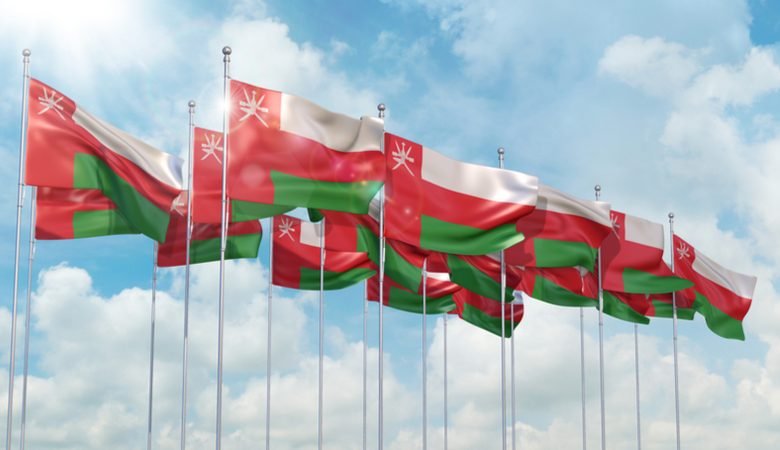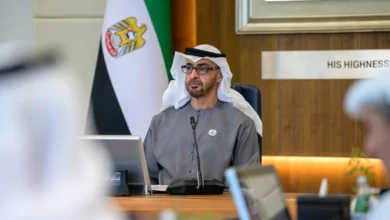
Oman Economy Shows Strong Growth, GDP Reaches $24.5bn
Oman’s economy showed strong growth in the first quarter of 2025 with a 2.5% increase in GDP at constant prices. The sultanate’s GDP reached OMR 9.43 billion (approximately $24.5 billion) at market price, compared to OMR 9.20 billion in the same period of 2024[-2][-3].
The economy’s positive momentum came from non-oil sectors that grew by 4.4% in added value and contributed OMR 6.92 billion to the overall GDP[-2][-3]. Agricultural and fishing activities led the growth with an exceptional 7.6% increase, adding OMR 273.6 million[-2][-3]. Industrial activities maintained strong performance with a 7% rise that added OMR 2.03 billion to the economy[-2][-3]. The oil sector saw a minor decline of 0.4% during this period.
Oman GDP grows 2.5% to $24.5bn in Q1 2025
Image Source: Verified Market Research
Latest data from the National Center for Statistics and Information shows Oman’s gross domestic product reached OMR 9.43 billion at constant prices in Q1 2025. This marks a 2.5% increase from OMR 9.20 billion in the same period of 2024. The numbers demonstrate Oman’s economic resilience despite global challenges.
The economy expanded as sectors of all types grew steadily. Non-oil activities emerged as the life-blood of Oman’s economic growth. These sectors grew by 4.4% and contributed OMR 6.92 billion to the nation’s economic output by Q1 2025. The figure stood at OMR 6.63 billion during Q1 2024.
Current price measurements paint an even stronger picture of Oman’s 2025 economic performance. GDP grew 4.7% to reach OMR 10.53 billion compared to OMR 10.05 billion in the same period last year. Price changes in the economy explain the difference between constant and current price measurements.
Sector-wise performance breakdown:
- Agriculture and fishing activities grew by 7.6%, contributing OMR 273.6 million
- Industrial activities increased by 7%, adding OMR 2.03 billion
- Service sector expanded by 3.2%, contributing OMR 4.62 billion
Q1 2025 reshaped the scene of Oman’s economy as traditional sectors showed mixed results. Crude oil production fell by 2.2%, adding OMR 2.45 billion to the economy. Natural gas activities, however, grew impressively by 9.5%, contributing OMR 475.3 million to the GDP.
Current price measurements revealed even stronger growth in some sectors. Agriculture and fishing activities grew by 11.1%, contributing OMR 326.6 million. The services sector also performed well with 4.2% growth, totaling OMR 4.84 billion.
These numbers showcase Oman’s ongoing economic diversification efforts. Economic diversification remains the life-blood of Oman’s future as the sultanate reduces oil dependency while developing other promising sectors.
Non-oil sectors drive majority of growth
Oman’s economy shows promising results from its diversification strategy. Non-oil sectors performed strongly in Q1 2025 and posted a 4.4% increase in added value. These sectors reached OMR 6.92 billion compared to OMR 6.63 billion in the same quarter of 2024.
The agriculture and fisheries sector stood out with an impressive 7.6% growth rate that added OMR 273.6 million to the GDP. The sector showed steady progress and grew 2.8% throughout 2024, contributing OMR 987 million at constant prices. Oman managed to keep its food security strong by building more than 80 markets, slaughterhouses, and kiosks since 2021 through its governorates development program.
Industrial activities grew by 7% and added OMR 2.03 billion to the economy. The service sector grew at 3.2% and remains the biggest contributor with OMR 4.62 billion.
These results match perfectly with ‘Oman Vision 2040’s priorities of economic diversification and financial sustainability. The country’s mutually beneficial alliances helped keep inflation low at just 0.6% in 2024. This is a big deal as it means that the rate stayed well below the GCC average of 2%.
Non-oil exports have become crucial and made up 33% of total exports by mid-2024. Mineral products led with exports worth OMR 1.304 billion—showing a 21.5% year-on-year increase. Ordinary metal products followed with OMR 671 million, growing 7.3%.
The outlook for Oman’s economy in 2025 looks bright. We expect growth in food production, infrastructure construction, and energy-intensive industries. Investment in renewable energy, especially green hydrogen projects, shows that Oman’s economic outlook for 2025 remains positive as diversification efforts continue to succeed.
Oil sector sees mixed performance amid global shifts
Image Source: Safety4Sea
Oman’s non-oil sectors showed strong growth, but petroleum activities painted a different picture in Q1 2025. The oil-related activities dropped by 0.4%, reaching OMR 2.92 billion compared to OMR 2.94 billion in the same period of 2024. These numbers reflect the challenges the traditional energy sector faces.
The country’s crude oil production fell by 2.2%, adding OMR 2.45 billion to the economy. Oil and gas remain the life-blood industries that historically added 72% to the country’s GDP. The state’s public revenues also decreased by 7%, reaching OMR 2,635 million by Q1 2025’s end compared to OMR 2,826 million in Q1 2024.
In spite of that, natural gas emerged as a bright spot in the energy sector. It grew by 9.5% and added OMR 475.3 million to the GDP. This growth helped balance the decline in crude oil output. The gas sector’s success continued steadily. It produced 48.553 million cubic meters of non-associated natural gas in 2023, showing a 2.4% increase from 2022.
The 2025 economic outlook shows a crucial moment in Oman’s energy transition. Several key projects strengthened the sector despite the challenges. The OQ Ammonia Plant in Salalah and Bisat Oil Field in Block 60 helped OQ boost daily production by 11% compared to 2022. Production reached 246,000 barrel of oil equivalent per day in 2023.
The country’s economic future embraces environmental responsibility. OQ aims to achieve net-zero emissions by 2050 and plans to cut emissions by 25% by 2030 from 2021 levels. These steps show how Oman’s 2025 economy continues to adapt. The nation balances traditional energy production with sustainability as global energy markets change.
Oman’s economy grew by 2.5% in Q1 2025, showing how well its diversification strategy works even in challenging global conditions. This growth aligns with Vision 2040’s economic targets. Non-oil sectors now lead the way, contributing OMR 6.92 billion to the economy.
The agriculture and fishing sector grew by 7.6%, while industrial activities increased by 7%. Services remain the biggest part of GDP with a steady 3.2% growth. These numbers show how effectively Oman moves away from oil dependence.
The oil sector’s mixed results prove this transformation. Natural gas activities jumped by 9.5% despite a small drop in crude oil production. This shows Oman’s move toward cleaner energy. The country’s strong economic foundation reflects in its low 0.6% inflation rate.
Oman’s economic future looks bright. Food production, infrastructure projects, and heavy industries will stimulate future expansion. The country invests heavily in renewable energy, especially green hydrogen projects. This shows its dedication to eco-friendly economic growth. Oman builds a stronger, more diverse economy by combining its traditional strengths with new innovative sectors.




